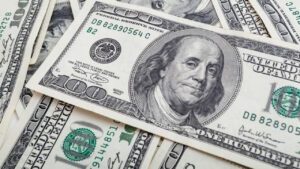
KSG Agro holding by the beginning of March 2023 intends to export to Asia and Africa 7 thousand tons of cereals, which will be shipped through the ports of Odessa and Odessa region in the “grain corridor”.
As reported in a press release from the group of companies in January-February 2023 at the ports of Odessa and Odessa region has already delivered more than half of the planned exports of agricultural products.
It is specified that the batch of crops consists of 4 thousand tons of wheat, 2 thousand tons of barley and 1 thousand tons of corn.
“Export of grain crops for us is not only a diversification of sales, but also a contribution to global food security. With the effective and safe operation of the “grain corridor” we are planning to continue exporting our products”, – the words of the head of the board of directors of the holding Sergey Kasyanov are given in the report.
Vertically integrated holding KSG Agro is engaged in pig breeding, as well as the production, storage, processing and sale of grain and oilseeds. Its land bank is about 21,000 hectares.
According to the agricultural holding, it is one of the top five pork producers in Ukraine.
KSG Agro in 2021 increased its net profit by 16 times compared to 2020 – up to $20.27 million, revenue – by 44% to $30.75 million, while increasing EBITDA by half – to $12.28 million.

The U.S. dollar is strengthening against the euro, the yen and the pound sterling in trading on Friday.
The ICE-calculated index showing the dollar’s dynamics against six currencies (euro, Swiss franc, yen, Canadian dollar, pound sterling and Swedish krona) is adding 0.16%, while the broader WSJ Dollar Index is up 0.18%.
The euro/dollar pair is trading at $1.0722 as of 7:50 a.m., up from $1.0743 at the close of the previous session.
The pound is at $1.2097, compared to $1.2121 the day before.
The dollar went up to 131.74 yen against 131.54 yen at the close of trading on Thursday.
Signals that the Federal Reserve (Fed) may raise the benchmark interest rate higher than the market expects provided support for the American currency. Several Fed policymakers this week signaled they believe a further rate hike is necessary because the fight against high inflation has not yet been won and there is no significant slowdown in economic growth.
Next week, the January U.S. inflation data will be released. The consensus forecast from experts cited by Trading Economics suggests consumer prices are up 0.5% from December, when they fell 0.1%.
The Australian dollar fell in trading Friday to $0.6924 from $0.6937.
The Reserve Bank of Australia (RBA) raised its forecast for core inflation, which excludes food and energy costs, for the current fiscal year ending in June to 6.25% from 5.5%.

The contract on the merger of UJSIC “ASKA” (Zaporizhzhia) to IC “VUSO” (Kiev), as well as the relevant transfer act is planned to approve the shareholders of IC “VUSO” at the meeting on March 14 of this year, reported in the agenda of the shareholders’ meeting, placed in the information base of the National Commission on Securities and Stock Market (NSCBM).
It is also planned to consider the issue of approval of the decision on the issue of shares for the purpose of converting the shares of UASKA to the shares of VUSO Insurance Company, to which the accession is carried out.
As reported, at the end of November 2021 Renat Akhmetov’s investment company SCM reported reaching preliminary agreements on the sale of UJSIC “ASKA” to shareholders of IC “VUSO”. The National Bank on December 22 has agreed the purchase of 99,593% of “ASKA”, as well as 62,2156% of the shares of Private JSC “Insurance company “ASKO-Donbass North” (Druzhkovka, Donetsk region), in which 62,4699% belonged to “ASKA”.
UJSIC “ASKA” is the first private insurance company which has appeared in independent Ukraine, and has been working for already more than 30 years. It belonged to the portfolio of international investment company SCM. On December, 22nd, 2021 NBU decided to cancel 34 its licenses for insurance, except the license for obligatory insurance of civil liability of motor vehicles owners (OSAGO) on the basis of the submitted application.
IC “VUSO” was founded in 2001. Nowadays it owns 50 licenses: 34 – for voluntary and 16 – for compulsory types of insurance. It is represented in all regions of Ukraine.

A dog named Bobi from Portugal is now officially the oldest dog ever to live on the planet. This achievement was fixed by the representatives of the Guinness Book of Records.
He managed to beat the previous record of the dog-longest living, held for decades.
Bobi is a purebred of Portuguese Raffeiro do Alentejo breed with an average life expectancy of 12 14 years.
The previous oldest dog recognized by the Book was Bluey from Australia, who died in 1939 at the age of 29 years and five months.
As of February 1, Bobi was 30 years and 226 days old, and I must say, he is doing well for his age.
Bobi’s age for the Guinness Book of World Records is confirmed by the Portuguese government’s pet database, which is administered by the National Union of Veterinarians.
Bobi has been a lifelong resident of the Costa family in the village of Conqueiros on the west coast of Portugal, and he was born there as well.
Owner Leonel Costa, who is eight years older than Bobi, says the secret to the dog’s longevity is the peaceful environment around him. Perhaps genes also influenced – Bobi’s mother lived 18 years.
“Between a can of pet food or a piece of meat, Bobi doesn’t hesitate to choose our food,” notes Leonel, who now always soaks the human food Bobi is given in water to remove excess spices.
However, age does take its toll on Bobi, who has mobility problems and vision problems.

PJSC Ukrnafta plans to equip and open about 100 new stores at its filling stations in 2023, the company said in a press release Thursday.
“Among the team’s goals for this year is to equip about 100 new stores at stations and increase the share of non-fuel sales,” the document said.
Ukrnafta said one such store is located at the company’s upgraded station in Kalush, 8a Yevshana St., which was opened by the company.
“At the modernized station expanded the range of services and began work store. Among the assortment: drinks, snacks, accessories for drivers,” – informed in PAO.
The complex is also equipped with an additional generator, a coffee machine and an Internet access point – if necessary, it can operate as an indestructible point.
As we earlier reported, on November 5, 2022, the Supreme Commanders Headquarters decided to confiscate Ukrnafta shares (excluding the controlling interest in Naftohaz Ukrainy) as state property during the martial law period. Before the seizure, the structures of Ihor Kolomoyskyy and Hennadiy Boholyubov owned about 42% of Ukrnafta shares.
“Ukrnafta owns 85 special permits for production of hydrocarbons. On its balance sheet there are 1791 oil and 147 gas wells. The company owns 537 gas stations, of which 449 were operational at the end of December 2022. The rest were either damaged as a result of military operations or were located in the temporarily occupied territories.

Oil prices are down on Friday, but finished the week in the plus.
The price of April futures on London’s ICE Futures Exchange for Brent was $84.32 a barrel by 7:15 a.m. on Friday, down $0.18 (0.21%) from the previous session’s close. Those contracts fell $0.59 (0.7%) to $84.5 a barrel at the close of trading on Thursday.
The price of WTI futures for March crude oil at NYMEX fell by $0.29 (0.37%) to $77.77 per barrel by that time. By the close of previous trading the cost of those contracts declined by $0.41 (0.5%) to $78.06 a barrel.
Both Brent and WTI gained more than 5% YoY on optimism about prospects for Chinese demand, which rose after Saudi Arabia raised March prices for its main oil grade supplied to Asia.
At the same time, traders fear that the protracted tightening of monetary policy in the U.S. could weaken the country’s economy and, consequently, fuel consumption.
Earlier this week, several U.S. Central Bank executives made it clear that they believe it is necessary to continue raising the U.S. benchmark interest rate because the fight against high inflation is not over.
“Oil will continue to rise in price if fears of a downturn in the economy subside,” said CITIC Futures Co. Gui Chenxi, cited by Bloomberg. – The market is hoping for higher energy demand as we see mobility growth in China, as well as in the U.S. and Europe.